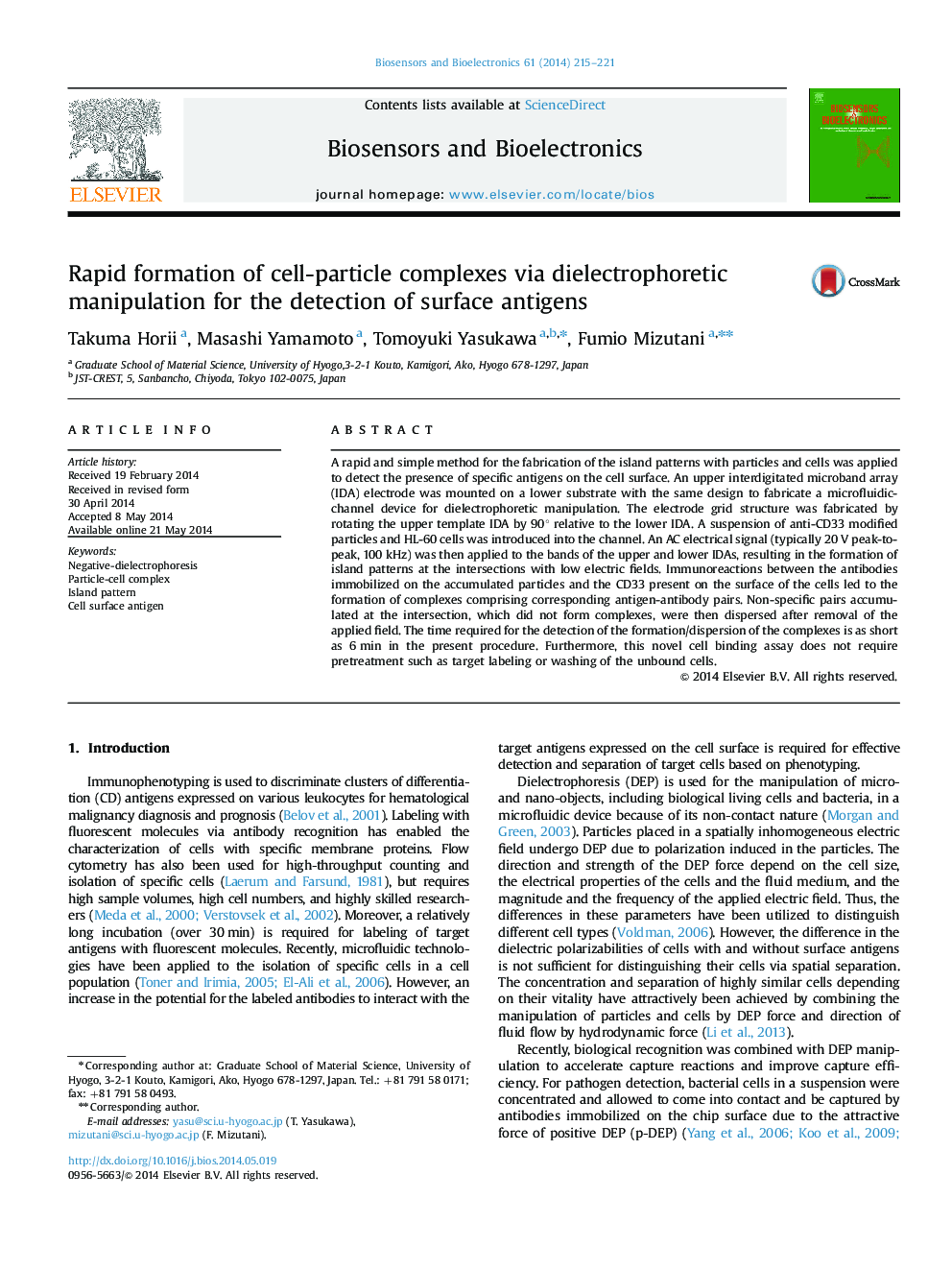| Article ID | Journal | Published Year | Pages | File Type |
|---|---|---|---|---|
| 7233106 | Biosensors and Bioelectronics | 2014 | 7 Pages |
Abstract
A rapid and simple method for the fabrication of the island patterns with particles and cells was applied to detect the presence of specific antigens on the cell surface. An upper interdigitated microband array (IDA) electrode was mounted on a lower substrate with the same design to fabricate a microfluidic-channel device for dielectrophoretic manipulation. The electrode grid structure was fabricated by rotating the upper template IDA by 90° relative to the lower IDA. A suspension of anti-CD33 modified particles and HL-60 cells was introduced into the channel. An AC electrical signal (typically 20 V peak-to-peak, 100 kHz) was then applied to the bands of the upper and lower IDAs, resulting in the formation of island patterns at the intersections with low electric fields. Immunoreactions between the antibodies immobilized on the accumulated particles and the CD33 present on the surface of the cells led to the formation of complexes comprising corresponding antigen-antibody pairs. Non-specific pairs accumulated at the intersection, which did not form complexes, were then dispersed after removal of the applied field. The time required for the detection of the formation/dispersion of the complexes is as short as 6 min in the present procedure. Furthermore, this novel cell binding assay does not require pretreatment such as target labeling or washing of the unbound cells.
Keywords
Related Topics
Physical Sciences and Engineering
Chemistry
Analytical Chemistry
Authors
Takuma Horii, Masashi Yamamoto, Tomoyuki Yasukawa, Fumio Mizutani,
